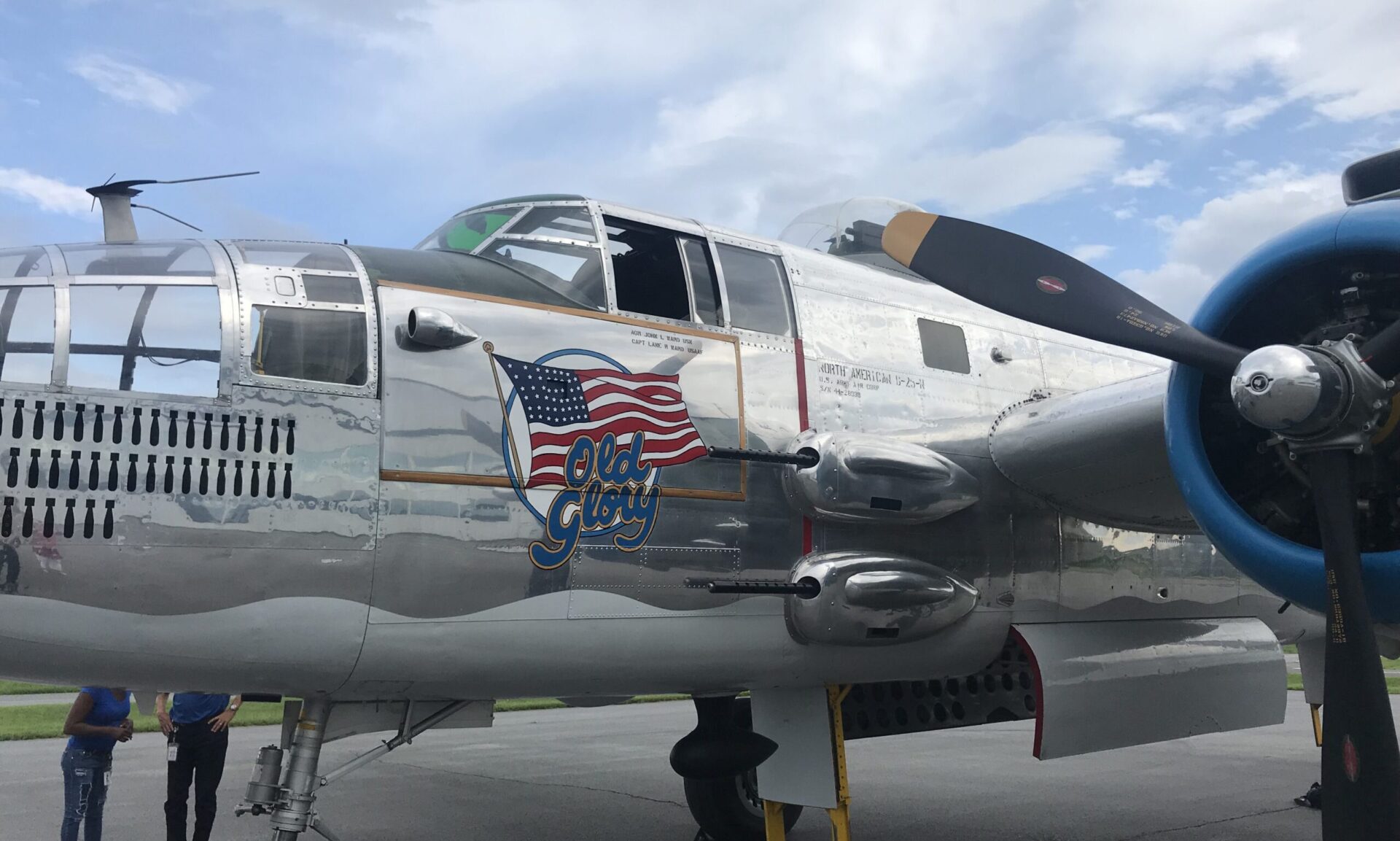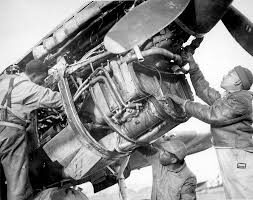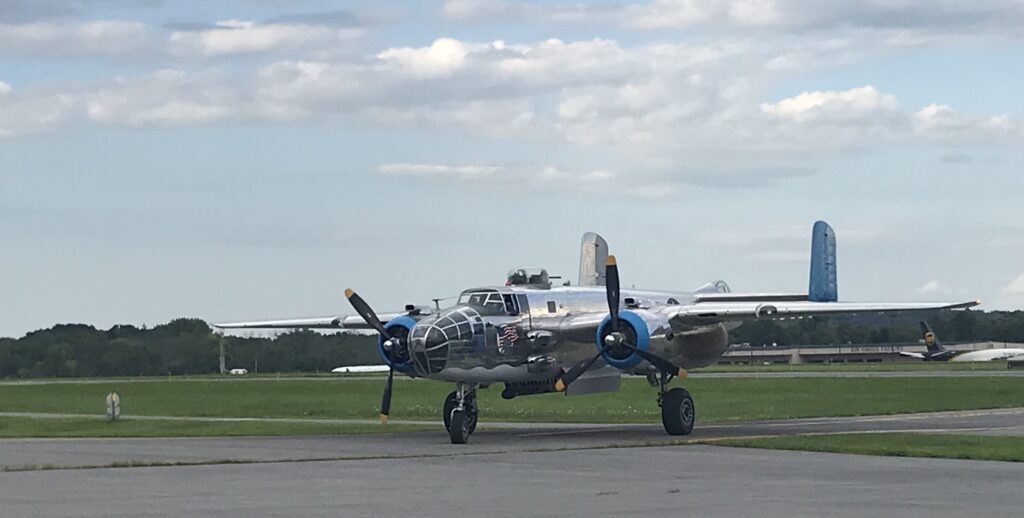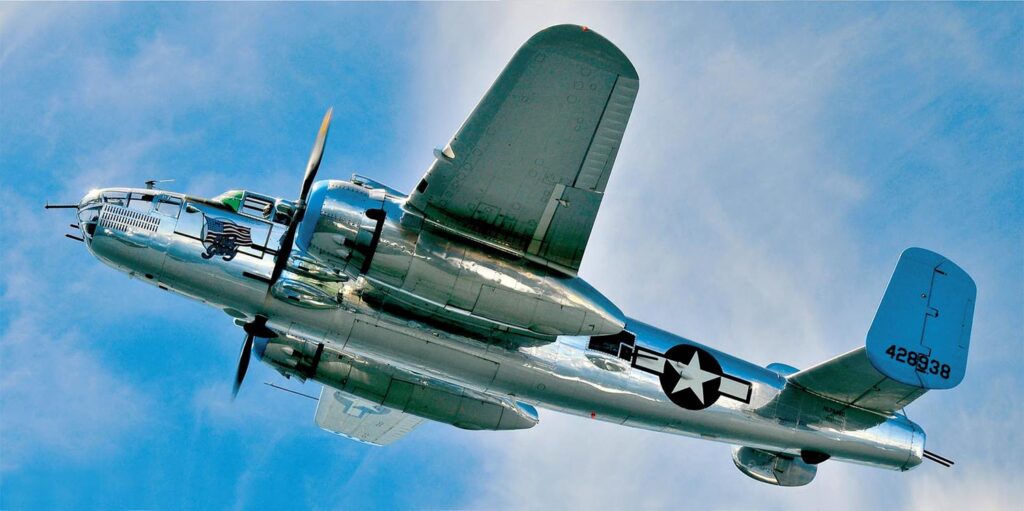Soon after Pearl Harbor 1941, the sneak attack that the late President Franklin D Roosevelt called “A Day of Infamy”, the 310th was organized and was activated in March 1942. The 310th was designated as a medium bomber Group consisting of four squadrons. Each squadron had 6-two engine B-25 Mitchell aircraft. The versatile B-25 was named after General William “Billy” Mitchell one of America’s key architects of air power. The 310th Bomb Group was made up of four squadrons: the 379th, 380th, 381st,and the 428th.
From the burning sands of Tunisia and Libya to the snow covered Italian Alps the Group flew combat missions. They suffered in desert temperatures of 118 or more with the only shade provided were the wings of their aircraft or the pup tents in which they slept. These U.S. Airmen bivouacked in the cork forests of North Africa, survived the monsoon floods of Cape Bon, the German air raids and the buzzing hordes of malaria- laden mosquitoes of Corsica. It was no vacation haven.
The group participated in the invasions of North Africa, Sicily, Salerno, Anzio, and Southern France. Battle Honors and Battle Stars were repeatedly earned for combat action in the Tunisian, Sicilian, Naples/Foggia, Rome/Arno, Southern France, North Appennines, Central Europe and Po Valley Campaigns as well as two Distinguished Unit Citations for meritorious action. No combat group was involved in more European Theater of Operations invasions than the 310th.
Some of the heroic stories about low-level missions against enemy shipping by the 379th squadron in North Africa and the Greek Islands were so dramatic that they reached the ears of General James Doolittle… he had to see for himself. Doolittle ‘signed up’ for a low-level sea sweep mission in February 1943, which netted three Seibel Ferries and confirmed his belief in these 75mm cannon toting aircraft.
That same month the 310th sank an enemy tanker, a heavily armed freighter, one German cruiser, eight Seibel Ferries and knocked down 10 German aircraft. Doolittle had used the versatile B-25s to bomb Tokyo in April 1942 and while they had no squadron or group designation, eight of the Doolittle Raiders would later wind up with the 310th in North Africa, December 1942.
When the 57th Bomb Wing intelligence learned that an enemy tanker, escorted by a cruiser and two destroyers was bound for Tunisia an attack was ordered. The 310th was assigned the task and flying no higher than 100 feet the B-25s attacked. The first element scored some hits on the tanker while the second element struck the three-escort ships. The tanker was set afire, the cruiser sank stern first and the two destroyers were severely damaged.
One mission from North Africa to the mainland of Italy called for 36 of the 310th aircraft to bomb a key transportation center near Naples. On their way to the target 50 enemy fighters intercepted and attempted to divert the B-25 formations, it didn’t work. The target, railroad marshalling yards, was destroyed and 18 of the attacking fighters were shot down. But the victory was costly for the 310th. Three of our aircraft were downed, and the remaining ships returned to base riddled with flak and machine gun bullet holes. This mission earned one of the two Distinguished Unit Citations for the 310th. Another thumbs up for victory.
In March 1943 the 321st. Bomb Group flew its first combat mission while the 340th Bomb Group flew its first mission a months later just as the 310th completed 52 combat missions. These three groups of B-25s were part of the 12th Air Force.
Eighteen B-25s, while on a routine sea sweep after German shipping, ran into a Luftwaffe aerial convoy off the coast of Cape Bon in North Africa flying at about 200 feet off the ocean. The convoy of 25 German transports and a dozen or so ME 210’s and other assorted aircraft was completely destroyed by the 310th. The B-25s circled and ranged up and down the German convoy utterly devastating the flight. The accompanying P-38 fighters finished the task. On that April 1943 “Turkey Shoot” the 310th claimed 10 JU 52’sand a JU 88 shot down.
In June 1943 Pantelleria Island surrendered to air power, the first such capitulation to air power ever recorded. Shortly after, the island of Lampedusa also surrenders to air power displayed by the devastating medium bombers of the 12th AAF.
The group was stationed in such exotic named places as: Mediouna, French Morocco, Masion Blanche, Telergma, and Berteaux, Algeria, Dar el Koudia, Tunisia, Souk el Arba, and Valle (Phillipville), Algeria, Oudna, and Menzel Temime, Tunisia, Gambut, Libya, Ghisonnacia Gare, Corsica, Fano, and Pomiglano, Italy.



